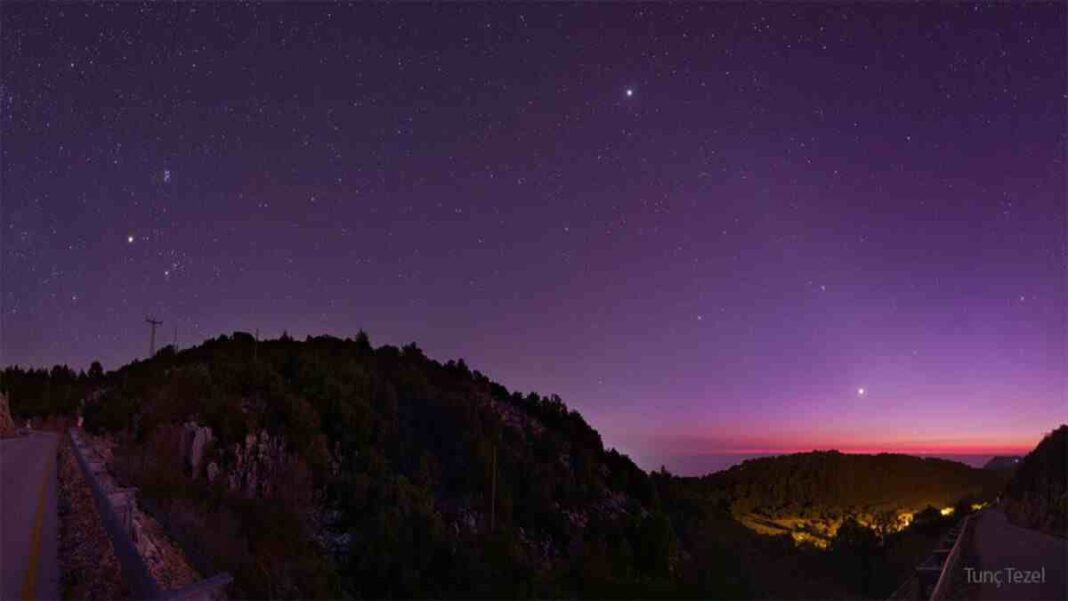UNITED STATES: American space agency NASA recently shared a picture that captures a rare phenomenon: all the planets of our solar system witnessed from Earth simultaneously. The planets, including Jupiter, Mars, Venus, Saturn, and Mercury, can be seen dazzling against a purple sky in the late evening in the “After Sunset Planet Parade” image published on January 2.
An astronomy event known as a “planet parade” occurs when many planets can be seen in the sky with the naked eye.

NASA shared the sight as the Astronomy Picture of the Day (APOD) on January 2. NASA’s APOD tradition dates back decades and involves posting a fresh image related to astronomy every day.
As internet users admired the brilliant dusktime
view, the picture rapidly went viral and included Mars, Uranus, Jupiter, Neptune, Saturn, Mercury, and Venus in one frame.
The photo, taken in December 2022 by astronomer and photographer Tunc Tezel, also included prominent stars, including Altair, Fomalhaut, and Aldebaran.
A new photograph and a brief explanation written by a qualified astronomer are posted daily, offering the ideal balance of educational and entertaining content.
The renowned “pale blue dot,” also known as “the biggest rock in our solar system,” was seen in APOD’s first image of 2023 via a photograph acquired by NASA’s Voyager 1 spacecraft in 1990.

Photographer Tommy Lease captured the breathtaking asterism Kemble’s Cascade of Stars in yesterday’s image (a group of stars different from a constellation).

‘Discover the Cosmos’, APOD’s tagline, promises that every day is a fresh exploration of the enormous, complex world in which we live.
The magnificent Kemble’s Cascade of Stars, an asterism (a group of stars different from a constellation), is depicted in yesterday’s image by photographer Tommy Lease.
These images show the vastness and beauty of our universe. These magnificent pictures also show our technology and the power of the human mind, taking pictures of such distant objects sitting on a small watery planet.
Also Read: Small Magellanic Cloud: NASA Release Another Stunning Image before 2022 Ends



